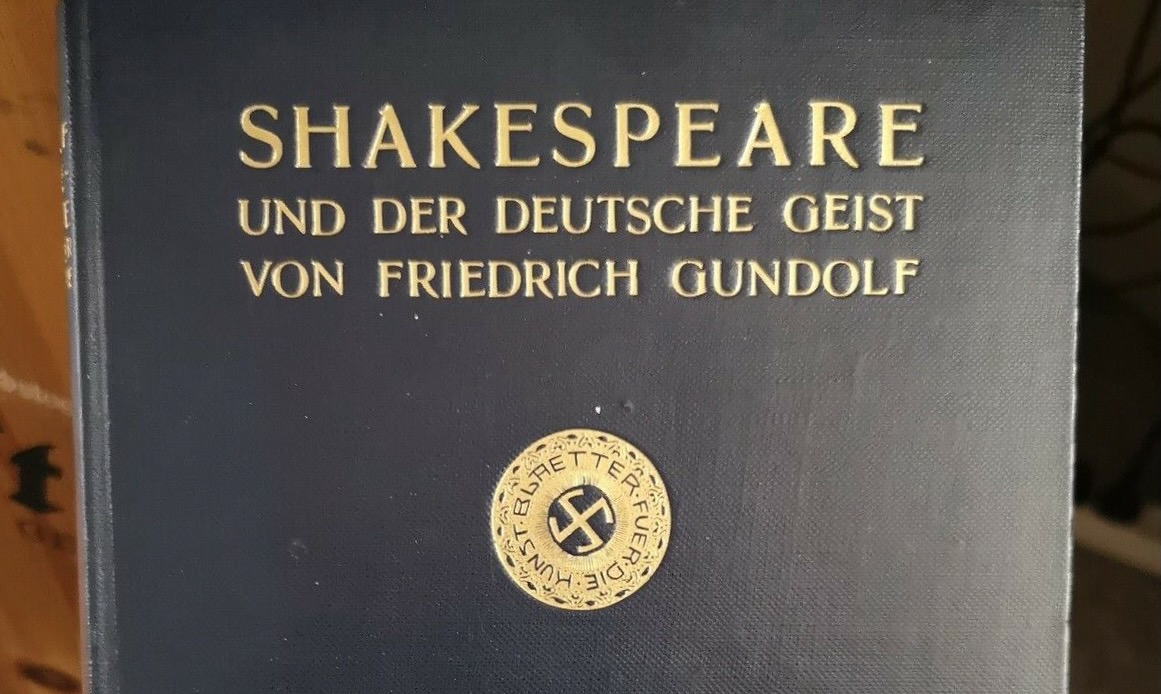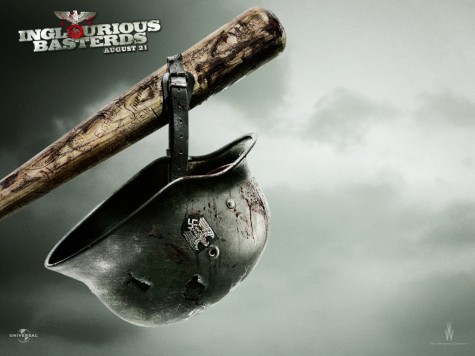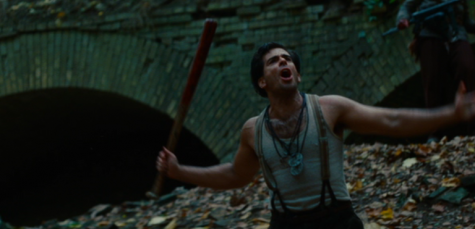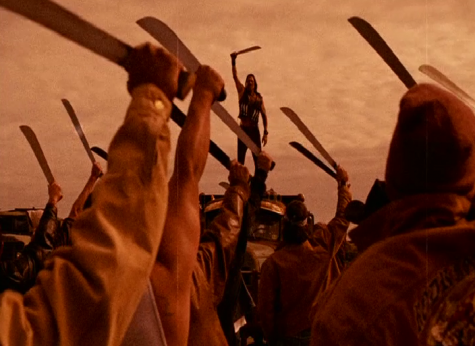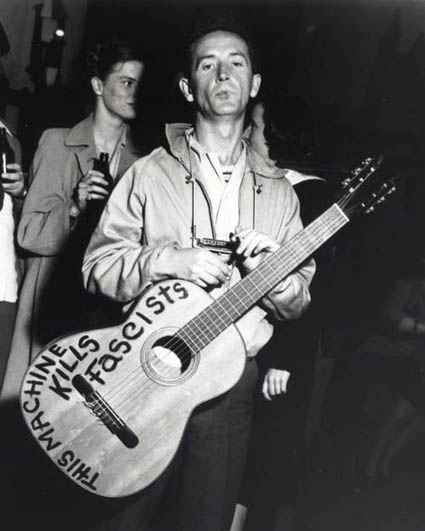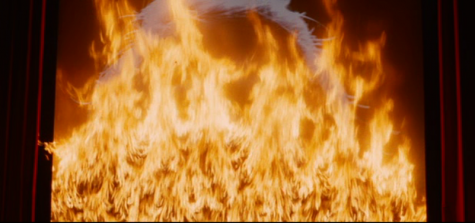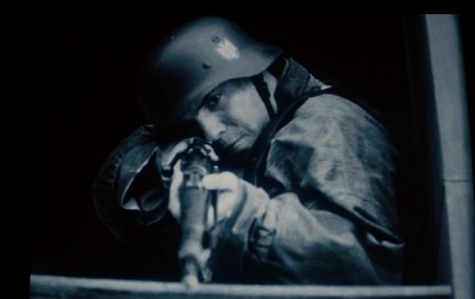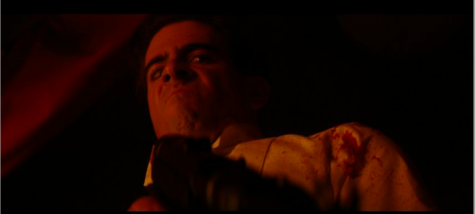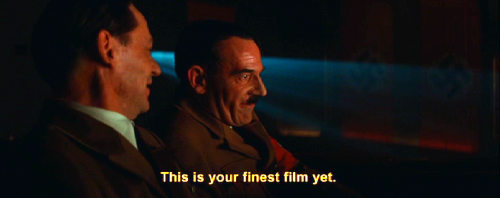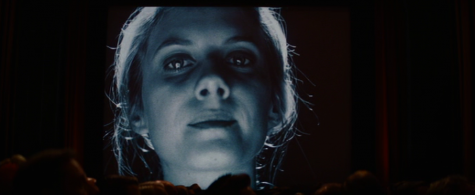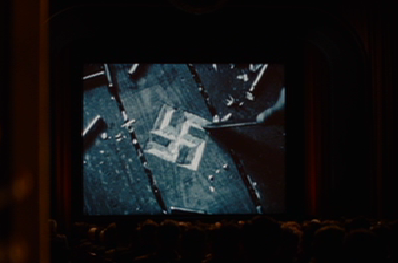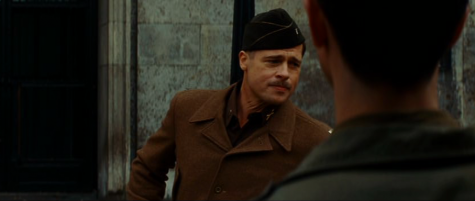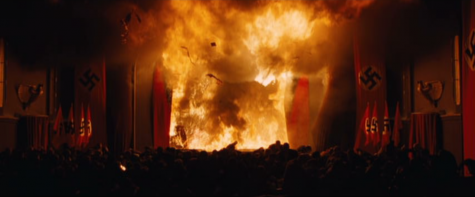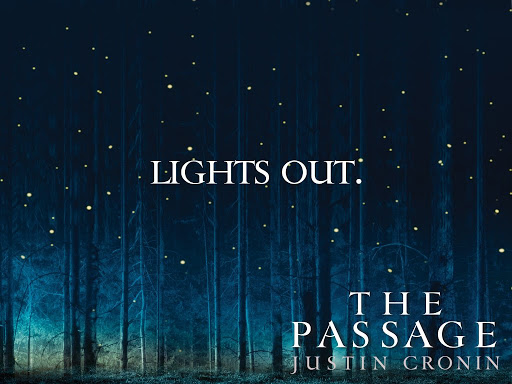

If you stick with this one, I think I’ll be able to explain how it is that fascism can be made appealing to ordinary Americans, and no fooling. I want to be clear that by “ordinary Americans,” I do not mean Birthers and Teabaggers. I mean the rest of us: suburbanites, semi-sophisticates, people who sometimes vote for Democrats, carriers of canvas tote bags. And by “fascism” I don’t mean any politics to the right of my own; I don’t mean traffic cops and my gym coach. I mean unpleasant Italians in the 1920s, Teutonic ghastliness, the Spanish clampdown. I’m not saying that I can show you how a generically right-wing politics appeals to the American Right; there’s not much that needs explaining on that front. I’m saying, rather, that I can show how something rather like National Socialism can be made appealing to you.
It all starts with Salon.com, which is, I grant, an unlikely place to begin a conversation about fascism. Salon, after all, is an unmistakably “progressive” undertaking: based in San Francisco, founded by a former editor at Mother Jones, temperately anti-war, feminist, queer-friendly, &c. The site represents a kind of publication that has never really existed in print form or on glossy paper: a lifestyle magazine for middle-class liberals, a site where you can get in one click from some fairly trenchant analysis of the US government’s misplaced “imperial priorities” to recipes for “the best burger I ever had” (and in the event, also pretty good). Salon is perhaps the closest thing Statesiders now have to an American version of the UK Guardian, the sort of magazine that will occasionally let itself engage in utopian speculation, when no idiom is more foreign to official writing about politics than that. One recent article introduced its argument with a brief thought experiment about an “imaginary classless society.” But if you look just a little bit harder at that same article, it turns out that such a society would have a “universal middle class.” Socialism as the apotheosis of the middle classes, their driving of all other players from the field: that’s Salon.
Earlier this summer, Salon decided to start a book club: the magazine’s readers would all read the same long novel, at roughly the same time, and would have a public, on-line discussion about it over the course of three weeks. The first book that Salon chose was The Passage, a new vampire apocalypse by a writer who teaches at Rice named Justin Cronin. It’s a little misleading to single out Salon for pushing The Passage this way. The novel has been getting all sorts of attention: declarations of love from Time and The Guardian, a book deal so big that it was reported as a news item in its own right in 2007. Ridley Scott has already bought the rights. There has been touting. Salon was making sure it kicked things off with a novel lots of people were going to be reading anyway.
They were also making a clean break with Oprah, by throwing boy-readers a book they could gnaw at. There are at least two different ways of telegraphing what it’s like to read The Passage. One way is to note its literary affiliations: The novel basically just takes the premise of Richard Matheson’s slender, economical I Am Legend—vampires have taken over the world—and bulks it out to a length that is prolix and Tolkienian: so not just one survivor, as in Matheson, but an entire village of survivors, then a quest narrative, which eventually ramps up into an out-and-out war story, a cage match cosmic and Manichean, between the men of the West and what are really just bioluminescent orcs.
The other way is easier: The Passage is a fast-zombie movie in prose. One suspects that Cronin has called his monsters “vampires” only because, in the fashion cycle of collective dread, vampires are back. Gone, mostly, are the zombies of the last decade—the dilatory, the dawdling, the pointlessly milling dead. Pop culture once again prefers its ghouls to have purpose and penetrating stares. Cronin’s cannibals resemble bloodsuckers in some respects, and the walking dead in others; five years ago he would have called them zombies; but it’s 2010, so he calls them vampires. I want to be careful here. At some level, it’s pointless to try to segregate out from one another Hollywood’s vampire and zombie populations. Monsters routinely intermarry. There have been lots of vampire-zombie splicings, not the least of which is I Am Legend itself. Or rather: I Am Legend was, via its first film version—not 1971’s The Omega Man, but a 1964 Italian production starring Vincent Price—one of the major sources for Romero’s Night of the Living Dead, which means that the zombie movie as we know it actually began as a mutation in the vampire code. But we can just as well leave that history aside. The broader point is that any time a movie, 30 Days of Night, say, has its vampires attack in numbers—any time it deploys them against humans in formations larger than three or four—it’s going to start looking, whether it means to or not, like a zombie pic. Humans will board up their windows and huddle in locked rooms. They will fall to multiple, scrabbling hands.
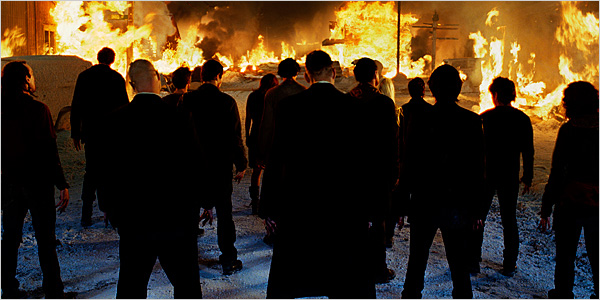
So vampires often look like zombies. And then there’s the simple point that filmmakers and especially novelists have woven so many variations on the vampire that they, like the queer people they are often made to resemble, come in all possible forms: vampire politicians, vampire mechanics, the vampire homeless. It seems useless to insist that vampires are really one way and not another. One wishes to say all the same that the genre’s anchoring works—the stories and novels that have set the horizon for the form: Polidori, Stoker, Anne Rice—have always given special emphasis to aristocracy, etiquette, seduction, intelligence. For a creature to register emphatically as a vampire—for it to be recognizable as something other than a zombie—it needs to seem like a superior being, Luciferous and more than human; and it needs to be something you could possibly make the mistake of falling in love with. All I mean is that a certain Byronism is pretty well wired into the thing.
Cronin’s “vampires,” meanwhile, are dim and scavenging herd animals, not superhuman but rather the opposite: degenerate and cretinous. Rigor commands that I also list the ways they are not like zombies: They are light-sensitive; they don’t turn everyone they bite; a very small number of them emit their memories and commands in a manner extrapolated from antique vampire mind-control or mesmerism; they are fairly hard to kill. But these are secondary characteristics, whereas the monsters’ zombie traits are central to one’s experience of the novel: They don’t have manners, and they (mostly) don’t have minds. Most important: They come in nests and pods and swarms and packs and scourges and hordes.
I want to stick with “hordes.” It’s important to get the matter of genre right, because to opt for the fast zombie, as your particular horror niche, is to place in front of a readership a distinctive set of historical or sociopolitical concerns, concerns that are at this point built into those monsters. Here’s the quick-and-dirty version: Fast zombies, as cinematic and now literary figures, are built almost entirely out of perceptions of Asians and Middle Easterners and Africans and native Americans, some of them new—fast zombies sometimes get framed as terrorists—most of them old: they are above all savages. (They are in this sense unlike slow zombies. I’ve argued out the distinction here.) This was already true of the landmark fast-zombie movies—28 Days Later and Zack Snyder’s Dawn of the Dead remake—and Cronin simply follows suit on this front. When the zombie epidemic erupts, the novel begins to incorporate all sorts of Bush-era GWOT-speak, which means that its vampire apocalypse is at some level nothing more than the War on Terror imagined as lost. But then Cronin has at the same time found a way to reactivate some very old colonial nightmares: One scene has a settlement of human survivors—the creepy survivors; the bad survivors—readying a human sacrifice, to placate the vampire-zombies, in what is clearly a replay of early Spanish lore about the Aztecs. This association is then cemented by Cronin’s notion of where vampirism comes from: It is a virus, let loose from deepest Bolivia, a kind of bat-Ebola, and its sinister work will be to make the United States equatorial. Fast-zombie stories take civilization as their highest good—that might sound like an uncontroversial proposition, but it isn’t—lots of stories don’t. They then designate the zombies as that-which-can-cancel-civilization, a baggy category that can include both al Qaeda and Zulus. Or to put this another way: Fast-zombie stories are devices for making palatable some of the old imperial beliefs, or, if you like, for manufacturing neo-imperial anxieties, though they have their own distinctive way of doing this, one that rather than flaunting the sturdy supremacy of civilization, emphasizes instead the latter’s tenuousness and so the possibility that culture and progress and refinement could collapse in their very hubs and capitals.
What I want to do at this point is list a number of things that early reviewers have said about The Passage; itemize this generic praise back into its commonplaces; and then work out what those vague and blurbish abstractions, with particular reference to this specific novel, actually mean.
•1) Reviewers have routinely described the book as “epic.” This was inevitable, because the book is long, 750 pages and counting. But for once that tag seems appropriate; it seems to indicate something more than just length. The Passage shares with the classical epics—Homer, Virgil, Dante, and the like—techniques and scenes that one doesn’t typically find even in other big, multiplot novels: above all, a vast and prophetic time scheme that, strictly tallied, covers more than a thousand years. The novel falls roughly into three sections: The first part recounts the outbreak of the zombie contagion and the collapse of the US government and American society; the second part jumps ahead a century and describes the workings of a survivor colony living behind walls in the interior of California; the third part follows a band of adventurers as they peel away from that colony and march across the American West, battling zombies, briefly joining a sinister counter-colony, and then enrolling, some of them, in the rump US Army—or rather the Army of the Republic of Texas, which it turns out has been on the ground all along and is the novel’s rootin’-tootin’ deus.
What Cronin shares with the Mediterranean and Mediterranean-style epics, in other words, is their long-durée concern with the Fate of Civilizations, a concern that requires his distended and decidedly non-novelistic narrative canvas, the span of generations. It is from the epic, too, that he has borrowed his descriptions of the zombie armies, though perhaps unwittingly and at two or three removes. Epics are utterly fixated on the distinction between fully settled people and still tribal or semi-nomadic ones. The final books of The Aeneid describe a small army of Trojan survivors as they invade Italy and conquer its indigenous people. Milton’s Paradise Lost describes Adam and Eve as two dwellers in the wilderness, naked foragers in “the new world.” The first American epic, Timothy Dwight’s Conquest of Canaan, recounts in heroic terms a righteous people’s war of extermination against a nation of savages whose land they regard as earmarked. The affinity matters because it is in some of its epic qualities that The Passage is least like a fast-zombie movie, since the films generally have compressed time-frames; are interested only in the apocalypse and its immediate aftermath; and almost never show survivors successfully fighting back. This is how we know that Cronin is not just cashing in—because to write a fast-zombie epic is something entirely different from, say, just novelizing Dead Alive, simply by virtue of letting the novel proceed past page 250, past the nuclear explosions over Boise and Bend, Oregon—simply, that is, by allowing that there might be, even after the swarming, story left to tell.
This then brings us to the next claim that reviewers have been making, which is that…
•2) The Passage is a wonderfully hopeful book. Time magazine called it “a story about human beings trying to generate new hope.” One of Salon’s readers remarked that “the post-apocalyptic world feels more hopeful than what preceded it.” Another reader agreed that the book’s middle and late sections are “immensely hopeful.” This hope is one of the things in the novel that most needs specifying, because Cronin has produced a full-on reconstruction narrative. It is hard to stress this point with the banging emphasis it deserves. The mood is one of settler expectancy, of pilgrims surveying a land whose savage inhabitants are dying of an introduced disease, though they still lurk ferociously in forests and canyons. The Passage, in other words, is trying to counter the despondent vibe of the long Iraq-Afghanistan decade by retelling the old America myth the way that public school textbooks are no longer allowed to tell it; by trying to get you to occupy the valiant position of the embattled pioneer, to imaginatively inhabit the geography of early settlement, what we used to call the frontier.
There are actually two major historical models that Cronin has incorporated into his book. The first is medieval Europe, especially in its early stages, the systole and diastole of contraction and expansion, the post-Roman heartbeat: villages in Normandy gathering in their borders like so much extra fabric; towns building walls; lords building castles; and then—back out into the wastelands; the outgrowth of an armed agrarianism; planned settlements for serfs beyond the Elbe, generous terms, no labor service, five years rent-free!; Teutonic Knights; Frankish machine-men with their monster-horses and their death-arrows; northern crusades into the heathen Baltic; the Spanish Reconquista—and no historical meme looms larger in The Passage than that: the Reconquest of America. The book’s survivors live in a walled city and have something like guilds and wear tunics and have all but abandoned books and carry crossbows, which were the tenth century’s great advance in military technology, a weapon so unsportingly good at killing people that the Church tried to limit its use. Crossbowmen were briefly pariahs.
The survivors also ride horses, though this image obviously does double duty. For beyond its medievalism, The Passage is most obviously a zombie Western—Cronin himself has said as much—subcategory siege, with the California settlement doubling as fort. Survivors trek across Nevada and Colorado. They cook jonnycake. A man in a remote house pours boiling water into a tub for his pregnant woman and sits watch at night, shotgun across his lap, armed against whatever might come stalking out of the woods.
The Passage, then, generates “hope” only because it’s underlying notion is that we’ve been through this all before; it is telling, through proxies and vampire-puppets, a history whose ending we already know; and so reassuring us of a certain cycle or historical repetition. Cronin’s answer to our usual bum and apocalyptic trip is to help us envision another round of colonization. North America will get to resettle itself. Indian Wars will be refought. To this end, the novel works in five or six documents form the distant future—conference papers from some symposium a millennium down the line—which is our guarantee, from an early point in our reading, that civilization has survived somewhere and in some form.
Another claim out of the reviews…
•3) The Passage is especially interested in what one reader calls “the civic structure of the colony.” This is true—and it’s an extension of the last point—because it involves “hope” again—and not just hope, but this horror novel’s unexpected interest in hope’s proper literary form and vehicle, which is utopia. Absolutely nothing about The Passage is more surprising than the moment that comes about a third of the way through, after you’ve read hundreds of pages of an utterly routine X-Files/outbreak plot, and you turn the page, and that plot is gone, and a full-blown utopia has taken its place, which is another way of gauging Cronin’s sense of his own writerliness, since the genre-swap—from apocalypse to utopia—is among other things a shift over from a heavily cinematic form to a quite peculiarly literary one. I don’t know that film is structurally barred from attempting outright utopias; I do know that it almost never does. Cronin, for his part, goes so far as to reproduce in its entirety the survivor colony’s written constitution, which is how you know that he has the genre’s canonical texts in mind—Thomas More, William Morris, and the like—that he is actually speculating about the daily workings of an alternate political order. That list of basic laws is the token of Cronin’s utopian seriousness (and is one of the feature’s of utopian writing that a commercial film would have the hardest time reproducing). Salon’s book critic, Laura Miller, said that the utopia was her favorite section of the book, but she is professionally disallowed from using that word, so what she actually said was that she “loves stories about how people form and sustain communities.” “Isn’t life in this last city kind of ideal?” a reader asked, “—if you ignore the vampire bit.”
It is under cover of phrases like these—“sustaining community,” “ideal city life”—that the novel’s fascism rides in. This is itself rather fascinating, since utopia often seems like the special province of the political Left, in some another-world-is-possible kind of way. The term itself, officially neutral, nominally harnessed to no particular ideology, was claimed by socialist thinkers early on. Fredric Jameson continues to use it as a euphemism for “communism.” So it is all the more remarkable to watch an American novelist, in apparent sincerity, attempt a utopia with strong fascist elements. There are at least three:
a) The first thing the constitution does is establish sovereignty, a “final authority” charged with “safeguarding DOMESTIC ORDER” and empowered to declare “CIVIL EMERGENCY.” This is Schmittian boilerplate, and generically authoritarian rather than specifically fascist, but it is worth noting that Cronin’s California does, in fact, break with the main lines of Anglo-American political thought, which—with their doctrines of mixed monarchy, the division of powers, check-and-balances, institutional cantilevers and counterweights, programmed-in gridlock and indecision—have always been hostile to sovereignty of precisely this kind. Montesquieu and Madison are among the books that no-one in the future will be reading.
b) This second one will take a little more explaining. Some social historians think that modern politics came into being in the seventeenth century when European governments began allowing themselves to worry about demography, which is to say to worry about the size and health of their populations. This led, in a hundred different ways, to a politics of the body; a medicalized politics of health and hygiene and sanitation; new political initiatives around birth and death; &c. One way of thinking about fascism is that it marked the culmination and cancerous transformation of this centuries-old development, which, however, continues to shape all modern governments, and especially the social democracies, to some greater or lesser degree. The important point about Cronin, then, is that his utopian colony is nakedly biopolitical in just this way, a utopia of eugenics and euthanasia. Fully a third of the constitution’s provisions involve quarantine. There are entire chapters devoted to mercy killings; when colonists are dragged away by vampires, their closest family have to ritually keep watch on the colony’s walls and cut them down if they return. Cronin calls this “standing the mercy.” Women in his utopia are taught trades, but then forced to abandon them when they become pregnant, relegated into compulsory motherhood, in a special building they are not allowed to leave. It is Cronin’s bleak gift to make such a scenario seem reasonable to an ordinary American reader—to make plausible that old physiocratic preoccupation with demography, with keeping the numbers up—by forcing us to imagine a human population reduced to some few hundreds.
c) The colony is also pervasively militarized, which is one of the ways its order is most like a fascism and least like an ordinary authoritarianism, since yer run-of-the-mill authoritarian wants the leadership to preserve a monopoly on force. In Cronin’s future, everyone is taught how to fight. There are weapons ready in every room. This is an ethos of war and blood, a society that has regenerated itself by abandoning the pacifism and potbellies of liberal society, though on a casual read, this all registers only as a low-level Spartanism. Nine-year olds get put through their daily samurai drills: “Where do they come from?” “THEY COME FROM ABOVE!” “And what do we get?” “WE GET ONE SHOT!”
That’s how The Passage looks if you emphasize its utopian qualities, hence its imagined innovations, its breaks with the established order of 2010—and it’s worth underscoring that these add up to a kind of political argument, since Cronin is trying to explain the difference between a society that knows how to survive a terrorist-savage threat and the United States, which, in the novel’s terms, mostly doesn’t. To that extent, these breaks all have the force of recommendations, what the U.S. could have done, but failed to do, to keep itself intact: Streamline the political chain of command, make sure pregnant women stop working, strictly limit the rights of immigrants, lie to the children, seal the borders, build a wall around them, shoot anyone who gets close.
But we can also run the argument in the other direction, and emphasize instead those features of our readerly present that Cronin’s settler-utopians would preserve. The novel’s medievalism, reconsidered from this angle, turns out to be something of a red herring, since its survivors see themselves as the keepers of American techno-civilization; the guardians of illumination in a vampire dark age, though that word, illumination, now refers to halogen lamps and not manuscripts; the ones who can keep running—literally; this is in the novel—the Humvees of the lost world. The novel’s premise is that civilization has collapsed, and yet it remains most interested in the people who have inherited American achievement. Civilization will only be possible again when people figure out how to re-activate its machinery. The middle sections of the novel are accordingly made up of three stock scenes regularly repeated: Characters try to improvise a patch on some machine they consider essential but no longer know, curved-arch-like, how to manufacture. Characters leave the colony to scavenge century-old goods from decaying strip malls and military bases, hunter-gatherers foraging for high-tops like they’re loganberries. Characters encounter some forgotten or never-before-seen device and wonder what it is and how to use it. This aspect of the novel becomes more and more important until it effectively takes over, since the novel’s final order of business is to fold the colonist-survivors into the U.S. Army, which is a techno-survival of an entirely different order, the novel’s strange belated admission that civilization didn’t really collapse after all, certainly not to some zero point. What destroys the first host of vampire-zombies, then, is a nuclear bomb left over from the military—a military solution, then, to a problem created by the military. Salon’s Laura Miller says she likes that the colonists come to the realization that they “need the outside world,” but taken on its own the phrase “outside world” could mean just about anything, when the novel is by necessity much more specific: The colonists need a modern military and heavy ordnance.
The one observation that Miller makes that is flat out wrong is that the novel’s idiom is not ethical or religious. She has said this more than once: “Cronin’s novel isn’t about the clash between good and evil, but about humanity’s struggle to forge a better world.” “Cronin’s characters, unlike [Stephen] King’s [in The Stand], are not caught up in a struggle between Good and Evil.” It’s true that Cronin is being a little sneaky on this front. The survivor colony is nominally post-Christian; they remember Christmas only as a rumor or a legend; they have adopted a new calendar that makes no reference to Domini. But then Cronin makes it his business, in the novel’s final chapters, to smuggle back in all the Christian language that he has up to that point carefully withheld. The Passage, indeed, is so stupidly ethical that it features not only a demonic head vampire whose name contains the word cock, but two supernaturally good characters, as well, the more important of whom is a pre-pubescent girl, and cock and girl appear to one character by turns in a dream and tell him respectively to murder and not to murder a woman in that dream, as in: Cartoon devil on your left shoulder, cartoon angel on your right. That the other radiantly moral figure is a Catholic nun should sufficiently confirm the point. In fact, by the time the novel ends, readers will have to swallow: an immortal nun, an act of heroic martyrdom, characters galvanized upon hearing Bible stories, a set of fiendish counter-apostles called “the Twelve,” and a group fighting these hellhounds led by a man named Peter, about whom sentences like this are written: “He inched his way forward, each step an act of faith.”
More generally, The Passage is packed with writing borrowed from the traditions of sentimental and domestic writing, and this, too, adds up to a kind of shadow Christianity or orthodox morality. It is also another of the ways—indeed, the most pervasive way—in which The Passage tries to make literature out of its cinematic scenario. Everything is POV, free indirect discourse, interior monologue. Events are endlessly focalized, and an intimacy is thereby obtruded on this Gibbonesque-Hobbsean story of civilizations falling and original contracts being formed. It is hard to overstate just how much family writing there is in this book, paragraph upon paragraph describing the ferocious attachments one feels to one’s closest kin: The only moment of love the colony’s leader ever felt was when his daughter was born. One woman reflects at length on how “wonderful” it was “to feel a baby moving inside her.” A tough warrior out on the quest confesses that what he misses most are “the littles.” Time praised the book for its “psychological insight.” Laura Miller said it was a vampire-zombie story “with heart.” In sentences like those we see a hard Right politics being made psychologically credible to a contemporary readership—and the psychology in play is a reassuringly familiar one, the psychology of Uncle Tom’s Cabin or a PTA meeting, the known term that carries you to an unknown place. Fascism is something you do for the kids.
What we can say now, then, is that Cronin’s utopio-fascism is tempered by a certain conservatism. But then fascism, of course, came in all sorts of different forms; it had national variants for one; and each fascist intellectual dreamed up a slightly different fascism, none of which corresponded precisely to any of the fascisms that actually existed on the ground. In the interests of precision, then: Cronin is helping us make our peace with an American fascism, but his is not the fascism of the intellectuals and the avant gardists, not a Nietzschean and anti-bourgeois fascism, which would, let’s face it, probably prefer the vampires. His is a fascism that has in certain key tenets—respect for Christianity and a conventional military hierarchy—joined forces with the conventional Right: a Spanish fascism, if you follow me, rather than a German one.
But then it’s not enough to name, however precisely, which particular historical variant of fascism Cronin is trying to resurrect. The important point, rather, is that Cronin is trying to imagine a version of fascism that has never existed, and this gets us to the crux of the matter: How, after all, do you engineer a fascism that will be palatable to a contemporary American audience, and not just to any audience, but to a Salon audience, a bunch of literate Lefties, the type of people who participate in book clubs? The answer, I think, is quickly given: You subtract race from the equation. For Cronin’s colonists are all multi-racial; the novel makes a big deal of this early on. Racial categories are, like the Jesus story, one of those things from Before that the survivors have heard about but barely understand. The novel is more cunning than this even. The utopian section begins with a kind of oral history recorded by the last person who was born before the vampire apocalypse. And she’s an old black woman, although the novel never out and tells you this; it expects you to hear it in her cadences. That’s a far cry from, say, Tolkien, who is sheerest poison, Wagnerite Anglo-fascism without the tunes. Tolkien’s racialism was always all but overt, just under the surface, like Norplant: all those Celtic-Viking heroes and elephant-riding bad men from the East; that scheming, greedy golem-Jew; those monstrous Urak-hai-sounds-like-Iroquois. So whatever Cronin is up to, it’s not that. Instead, he has worked out a more subtle kind of racial feint; he makes a black woman our gateway into the fascist utopia. The novel actually does something similar in matters of gender, since our colonist-heroes end up visiting two other survivor compounds, each of which treats women much worse than the novel’s central settlement, which means that readers can tell themselves that the colony, whatever its policies on pregnant women, has achieved a fair degree of gender equity. And then that’s it right there: A fascism in which people of all races and genders can participate more or less equally—that’s how one creates a fascism that will pass first-line liberal scrutiny. If you make it so that fascism isn’t primarily racial, an American reader won’t even recognize it as fascism. But then, of course, Cronin can only produce this de-racialized version of fascism because he has transferred the entire apparatus of race onto the zombies, who are sometimes just called “the Many” and who are, of course, a population of the killable. He can loosen racial categories among the survivors, because he has preserved the lethality of race at a higher and more abstract level. Not that any of this is buried in the novel, exactly, since the survivors have a series of different racial epithets for the zombies, one of which is “smokes,” which, well, if you don’t know, you should probably look it up, is all I’m saying. One of Salon’s readers said that “smokes” was “invented language” —and thought it was neat. And it just ain’t … neat, I mean … or invented.


